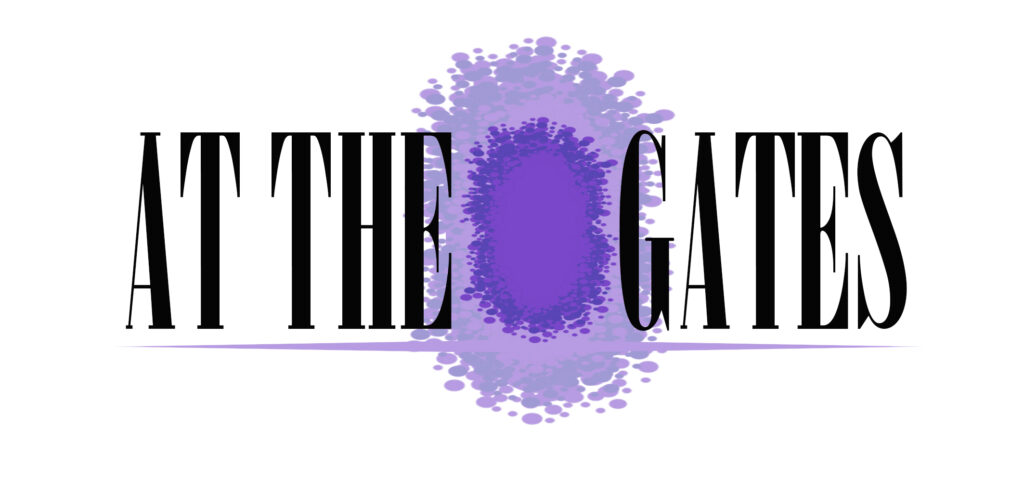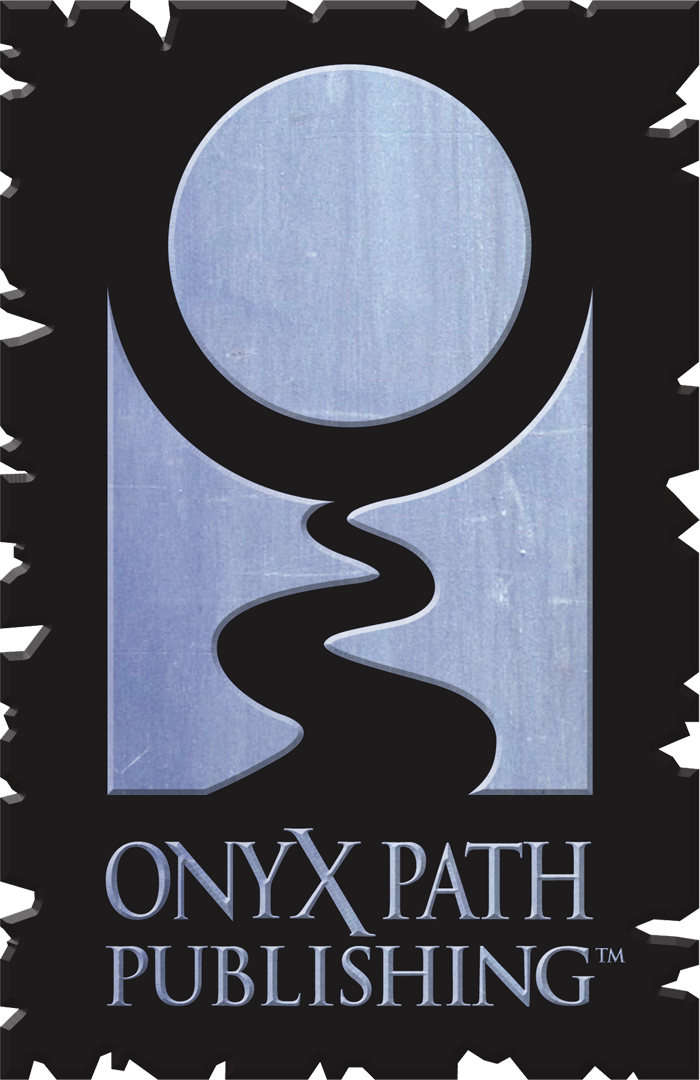
We bury the dead. And then we embrace life.
Dr. Melody Ratan, scholar of antiquity
Gaia isn’t a young world. Nor is it an old world. It’s ageless, forever changing and kept vibrant by the strong magic at its core. Gaia has birthed gods, monsters, and people as the ages tick by. It has seen empires, entire civilizations, come to rise and ruin. On the Everend continent — one of three spanning Gaia — the known calendar begins at the Time Before the Fall.
This chapter serves as your first introduction to Everend. We’ll go over its history, culture and ecology, daemons, and the seven nations that span the continent today. Throughout this chapter the Storyguide can find plot hooks — short prompts to inspire them when creating adventures and campaigns.
The Time Before the Fall
No one on Everend knows how long the Time Before lasted. It might have been a single turbulent century, or an epoch spanning a thousand millennia. No writing of this time survives, though some oral history remains. Attempts to date the many ruins dotting Everend have failed. All tales passed down from bard to troubadour, however, begin at the Well of Creation.
The Well of Creation is located on one of the smaller islands in the Federation of Eves and anyone with enough bravery (or foolhardiness) and money can access the hotly contested spot. The celestials — who’d later claim to be gods — were born through the Well, and it still radiates with that primordial power. No one knows if the gods’ birth made the Well of Creation, or if the Well’s magic created the gods. It’s a “chicken or the egg” situation that remains hotly debated among Everend’s scholars of antiquity and has even led to duels at dawn.
The gods, by all oral accounts, were a mixed bag. They warred with each other, and in doing so created the world. They raised mountains as palisades, forests to lay in ambush, and finally their spilled blood created the oceans. Their felled body parts rose again to become monsters, every bit as vicious as their originals. The gods then created humanity, demanding obedient worship with one hand while sending them into battle like chess pieces with the other. Legend states that there were more gods than stars in the sky once, even if now there are none in the world.
Of all the gods, only three are still named and worshiped in absentia today: Aaramus, Raell, and Marr. They tried to shelter people from the worst of their brethren, cupping them in gentle hands and setting them in the far places of Gaia. They taught people how to control fire, forge iron, and build cities from stone. Stories say they withheld the secret of writing though, perhaps feeling it would not be needed. The world’s rich magic, pouring plentiful from the Well of Creation, gave people a long life with all their needs met. No one suffered in the Cities of the Three, and none went hungry. All things were sentient, and rain and sun blessed flora that willingly gave its fruit to feed people. History was passed down from one storyteller to the next at the end of a long and happy life. It didn’t last. Eventually the wars of the other gods reached the far places, too, and even the stone cities were trampled. With nowhere left to go, people turned against the gods and slew them — but the price of their freedom was terrible.
Whatever weapon people unleashed against the gods broke the world. Magic that once nourished life now caused plagues and tumorous growths. Liquid fire ravaged the land. Plants withered at the root, and a great age of extinction began — spreading from the smallest to the largest creature. Those who survived the initial fires, and the years of darkness and hunger that followed, went into hiding in the deep places of the world. The broken magic flowed and ebbed in the ages that passed in human’s absence, until it finally returned to the Well of Creation. Here, where all life began and even the gods were born, the magic healed and returned to the land to usher in a second age: The Reconstruction.
The Reconstruction
The Reconstruction, despite being lumped together in all but the most dedicated academic circles, is not a single age — it is many. People returned to Everend’s surface to reclaim the continent. Their going was quick, as they have always been passionate and fast to act, but it was fraught with danger. Fire burned down entire cities before people learned to build with stone again. The discovery of bronze and then iron created both plowshares to till the land, and swords to drench those fields in blood. Monsters haunted the Reconstruction. Some of these wretched creatures were gods not killed, but instead maimed and twisted in the Fall. Others were new horrors born on the world’s surface in people’s absence. All eager for soft flesh and red blood. New civilizations rose and fell, adding their own ruins to those from the Time Before.
Casting around for allies, the people remembered Aaramus, Raell, and Marr, and called upon their aid once more. The Three answered as they always had. They guided people to Time Before ruins that might bless them with warmth and light, and away from others that would strike them down with plague. They taught them how to blend magic, weaker and less ubiquitous in this new age, with science to create weapons that might slay the monsters. They also gave them mankind’s greatest gift: writing.
Some say the Three taught people how to write in case the world broke anew. It did so much more than that though, as writing — captured first onto clay tablets and then parchments — facilitated long distance communication. It bound laws and agreements in immutable script and paved the way for trade agreements and political alliances. It let alchemists and artificers document and share their experiments. Finally, the invention of the printing press proved the final catalyst. Civilization accelerated under the guidance of ink and paper, until it coalesced into the modern nations of Everend.
If the world had changed, however, so had her people. The magic unleashed during the Fall combined with evolution as people struggled to survive, creating a mankind as myriad and varied as harvest seeds. One group of survivors emerged blind from the darkest caves, with the ears and echolocation of a bat. Another ventured forth strong as bears, with a thick hairy coat and large claws to protect themselves. They’ve since spread and mingled across Everend, making it impossible to pinpoint any one group’s origins. All of them are equally accepted as people.
The World’s Mourning
The people living on Everend today know they’re not the first to inhabit the continent. They also know they’ve lost much. The magic that once created a self-sustaining sentient world is gone. People can no longer call on the clouds for rain, nor can they ask plants to grow a bountiful harvest. Everything now requires work — hard work, and lots of it. Fortunately, they’re up to the task. People might not be able to talk to flora and fauna as they once did, but they can still listen to the world. Farmers use smell and touch to find the most fertile lands. Builders coax stone into the magnificent architecture with tools instead of song. Scientists harness new magic in alchemical formulae and strange machines to rival anything that came before.
The Reconstruction was a time of equal toil and achievement, and people rightly take great pride in their advances. The only loss still felt, acutely and deeply, is that of the Three. Sometime during the Reconstruction, Aaramus, Raell, and Marr fell silent. Their temples became devoid of celestial grace. Prayers went unanswered for the first time in known history. Even so, many people on Everend have kept faith. Priests maintain temples without any celestial prompting. Many towns and cities still observe moments of prayer. After everything they’ve been through — because of everything they’ve been through — people are confident that this too is just another hurdle to overcome, and that the Three will return in their own time.
Aaramus, seemingly alone among the three, left a parting gift to the world: a precious ore named aaramite. Aaramite is a pale metal, almost white at first glance, until it catches the light of the Aaramus moon to reveal a gorgeous rainbow hue. Aaramite is coveted for its beauty alone, though only the richest in all Everend could afford to turn it into jewelry or art pieces. More commonly, aaramite is used for its magical properties as it holds spells and enchantments better and longer than anything else on Everend. A touch of aaramite to the iron creates magical swords that stay sharp forever, and enforced armor that turns deadly blows into mere cuts. Placing a small sphere of aaramite in the foundation of a building preserves it against all natural disasters. Aaramite is most commonly found in the southern deserts in Virtrumia, Though deposits have been found — and kept a closely guarded secret — in other nations. Notably Selacha has uncovered a rich aaramite vein, though the nation of city-states is too fractured to mount a proper mining operation right now.

This is amazing! Are Everend and the World Below the same world (one on the surface, one subterranean)?
Great question!
very interesting chapter!